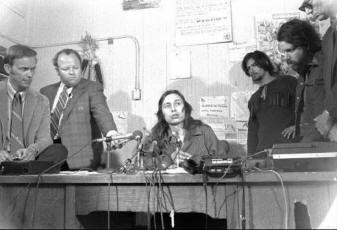- The Occupation of Alcatraz had a direct effect on federal Indian policy and established a precedent for Indian activism.
- While the Nixon administration did not agree to the demands of the protesters, it was aware of the delicate nature of the situation, and so could not forcibly remove them.
- In Nixon’s July 8, 1970 Indian message, he publicly condemned termination: “self-determination among Indian people can and must be encouraged without the threat of eventual termination.”
- Nixon’s attitude toward Indian affairs were bad on November 2, 1972 occupation of the Bureau of Indian Affairs (BIA). Nixon reputedly felt betrayed and claimed that “he was through doing things to help Indians.” (one year after last occupiers were forcibly removed from alcatraz)
- Man instances of Indian rights activism can be traced to the Occupation of Alcatraz.
- The Trail of Broken Treaties, the BIA occupation, the Wounded Knee incident, and the Longest Walk all have their roots in the occupation.
- When AIM members seized the Mayflower II on Thanksgiving, 1970, the Occupation of Alcatraz was noted as “the symbol of a newly awakened desire among Indians for unity and authority in a white world.”
- The occupation of Alcatraz Island served as a strong symbol and uniting force for indigenous peoples everywhere because of the importance the island held in their ancestors’ lives. Indians traveled to Alcatraz about 10,000 years before the Europeans even entered the Bay area.
- The occupation which began in 1969 caused Native Americans to remember what the island meant to them as a people. Although the Alcatraz occupation inspired many other Pan-Indian movements to occur, it also showed how gender played a part in Indian activism.

